The first major challenge was to reorient the s/m design team from a conventional single hull design framework to a double hull nuclear powered s/m concept. Besides, having to put aside all the design normative and processes learnt at the Professor Gabler’s s/m Design Institute in Lubeck, it required a complete mindset change. Next, came the enormous challenge of innovating, the unique fuel package required for a compact s/m reactor. The Indian establishment had vast experience in developing the nuclear power programme under very stringent international technology denial regime. At that point of time, we also faced serious obstacles in obtaining enriched uranium, the universally accepted staple feed for the s/m reactors, in the quantum required to sustain a nuclear s/m flotilla.
In respect of nuclear propulsion, the Indian Navy (IN) followed the traditional evolutionary global path…
Due to severe constraints on the accessibility to authentic information, there are many misconceptions afloat on Advanced Technology Vessel (ATV), the Indian nuclear submarine (s/m) programme. Most defence analysts and writers have had to rely on interpolation/extrapolation of informal personal interviews of retired officials. Hopefully, with the commissioning of INS Arihant in March 2016, the cobweb will be removed.
Recent writings of Yogesh Yadav and Balaz Szalontoi have unearthed some authentic documents from Russian and Hungarian national archives which have provided fresh insight into the subject. After INS Arihant was launched and the reactor became critical – Dr Anil Anand also released some historical facts linked to the compact nuclear reactor project in which he had a lead role to play
An attempt is being made here to put together – as realistic a picture as possible and try to correct some of the misconceptions that have crept into the discourse due to secrecy. Some important milestones crossed in the process are also recalled briefly.
The Indian Navy’s Preparatory Exercise
In respect of nuclear propulsion, the Indian Navy (IN) followed the traditional evolutionary global path. The prime responsibility of induction of marine engineering technology into the IN is that of the Directorate of Marine Engineering (DME) at NHQ. Commodore Tandon, the DME at that time, had in 1968, initiated a feasibility study project on marinised gas-turbine at the Gas Turbine Research Establishment (GTRE) in Bengaluru. This was before the acquisition of the Petya class of ships from USSR. Thereafter, most of the warships designed and built in India (including INS Vikrant under construction at Cochin Shipyard Ltd) and those acquired from Russia have gas turbines as their primary propulsion system. A similar exercise on nuclear propulsion was initiated around the same time.
Prime Minister (PM) Nehru never locked the door on keeping the option open for India to weaponise the nuclear genii under national security compulsions…
The spadework for the induction of nuclear propulsion was commenced long before the date normally ascribed to it. Not sufficient credit is given to the foresight of the naval leadership. Since the early 1950s, design engineering was part of the advanced engineering courses undergone by selected engineer officers at Royal Naval Engineering College at Plymouth and Cranfield Institute of Technology in UK. Similarly, naval architects did their post graduation at Royal Naval College at Bath, Greenwich in UK and the Grechko Naval Academy at Leningrad in USSR. Ship, submarine and its associated machinery design formed part of their studies.
In the mid-1960s, naval engineers were sent to BARC institution for post graduate studies in nuclear technology. Additionally, in the 1980s, as part of the HDW s/m contract – a multi-disciplinary design team was also deputed to Professor Gabler’s Submarine Design Institute at Kiel and Lubeck in Germany. Some of those officers, who graduated from these institutions, were at the helm of the design teams at GTRE, Defence Machinery Development Establishment (DMDE), Ship Building Centre (SBC), Submarine Design Group (SDG), Director General Naval Design (DGND), Proto-type Training Centre (PTC), Ship Building Centre (SBC), Machinery Test Centre (MTC) and Advanced Technology Vessel (ATV) HQs.
In 1968, after completing the nuclear technology course in BARC, Lt Gurmith Singh, (who continued with the ATV project till, his retirement from the Navy as Rear Admiral) was assigned the task of undertaking a joint feasibility study on nuclear propulsion. Thereafter, several project reports were rendered by the joint BARC-cum-Naval teams code named 932. The plethora of project report indicates the shaky ground on which we were operating at the time. The nuclear propulsion project took off in earnest in January 1976, after the approval of the Cabinet Committee for Political Affairs. Vice Admiral Tandon, the then Chief of Material, who along with the DME, was defending the case, had made it abundantly clear that at least a four-year lead time would need to be catered for – between the design/development of a nuclear plant and the s/m design.
Evidence now shows that even Prime Minister (PM) Nehru never locked the door on keeping the option open for India to weaponise the nuclear genii under national security compulsions. This policy was sustained by most of the PMs who followed. Dr Homi Bhabha, all along, had been advocating to PM Nehru that nuclear technology must be nurtured for such an eventuality. LK Jha and PN Haksar shared similar views.
The real impetus to the project came after the Soviet Navy demonstrated to PM Indira Gandhi, the capability of the nuclear s/m…
Indira Gandhi’s Strategic Initiative
The real impetus to the project came after the Soviet Navy demonstrated to PM Indira Gandhi, the capability of the nuclear s/m, in deterring the attempts of the US Navy (USN) to intervene in the Bay of Bengal, during the 1971 War. In February 1972, Grechko, the Soviet Defence Minister, is reported to have brought to the notice of Ambassador D.P Dhar and General Manekshaw as to how a Soviet nuclear s/m stalked the USN’s nuclear powered carrier Enterprise in December 1971. Thereafter, Indira Gandhi gave unstinted support to the project. As a matter of fact, she became the driving force behind it. In this context, the suggestion that the Soviets offered us nuclear s/m assistance, even before the Indo-Soviet Strategic Partnership Agreement was signed and Germany conceded to signing NPT in 1970, is inconceivable.
The programme was, thereafter, initiated on three parallel tracks – the nuclear propulsion, the s/m as a weapons platform and the Submarine Launched Ballistic Missile (SLBM). At the stage of R&D for a nuclear propulsion package, no specific end use for the platform was formally identified. At the working level, it was understood that the ultimate goal would be nuclear deterrence or nuclear-powered ballistic missile submarines (SSBNs). Both the Union of Soviet Socialist Republics and the People’s Republic of China had adopted the evolutionary learning curve route – i.e. conventional attack s/m (SS) > Cruise missile armed conventional s/m (SSG) > nuclear s/m with cruise missile (SSGN) > nuclear attack s/m (SSN) and finally to ballistic missile armed nuclear s/m (SSBN). Formally, India by compulsion also had to follow a similar route, especially, to evade the strict technology denial regime and the linked sanctions that would have been invoked otherwise.
A great deal has been said about the former Chief of Naval Staff Admiral Pereira’s objections to acquiring nuclear s/m. In reality, his objections were not based on any pacifist considerations nor was it due to any lack of strategic vision.
He was a seasoned sailor and a very well respected and pragmatic CNS who was concerned about:
- The naval budget not being able to support and sustain a nuclear s/m programme.
- The s/m arm was still in its infancy and the support structure was struggling to keep afloat.
- The fear that this would get derailed.
- With the historic naval experience behind him, he couldn’t be expected to, believe that henceforth, a sustained separate budget support, for even such a national strategic asset, would be forthcoming. The jury is still out on this specific issue.
The Indian establishment had vast experience in developing the nuclear power programme under very stringent international technology denial regime…
Marshal Ogarkov Principle
In April 1981, during Chief of General Staff, the Marshal of the Soviet Union, Ogarkov’s visit to India – he formally enunciated the so called Ogarkov Principle, that laid down the parameters of the assistance feasible. Their insistence on compliance with the safeguard clause prior to any agreement on Transfer of Technology (ToT) for the reactors was not a surprise but was not acceptable to India. In July 1981, Dr Raja Ramanna’s delegation was taken to Murmansk and shown an SSGN.
After extensive negotiations, the Agreement, was concluded in April 1982 and can be broadly categorised under following heads. They conform to the Nuclear Proliferation Treaty (NPT) and Missile Technology Control Regime (MTCR). All subsequent Soviet/Russian cooperation on the nuclear s/m programme flows out of that umbrella Agreement. The issue of detail design assistance on the reactor was left to be considered separately. The ambiguity over nuclear s/m with cruise missiles SSGN vs SSBN was maintained. The likely fallout from the Agreement has also been listed for illustrative purposes:
Lease Agreement
- The Lease Agreement for the boat, initially designated S1 and subsequently christened ‘Chakra’, was concluded in December 1986. Finally, it was transferred to the IN in September 1987 and returned after expiry of the lease in December 1990.The initial objective of the exercise was to provide:
i. SSGN operation and maintenance experience to the IN before induction of its own s/m.
ii. Physical access to the s/m and its reactor to the designers to familiarise them with the layout and space constraints.
- The replacement SSGN of Akula class, christened Chakra II, was leased out from 2012 onwards.
- Another SSGN is expected to be delivered this year.
- Possibly – the acquisition of the third s/m is also being seriously contemplated.
i. To begin with, training of two sets of crew for operations and maintenance, inclusive of work up.
ii. Assistance in setting up operation & s/m building infrastructure.
iii. Design and development assistance for the ATV programme:
- The first indigenous boat was designated as S2 – which has now been named Arihant. Her reactor achieved criticality on 10 August 2013. She has now successfully completed her extensive sea trials, except for a series of planned live firing trials of SLBM from her operating depth. That is scheduled for completion well in time before commissioning in March.
- S3, the next in line, designated as Aridaman, is being fitted out in SBC.
- S5 onwards will be bigger boats to accommodate the long range SLBMs K05 – likely to have higher powered reactor. Usage of higher enriched uranium fuel will enhance the power available per unit volume and lead to longer time between refuelling.
- SSNs are planned, thereafter.
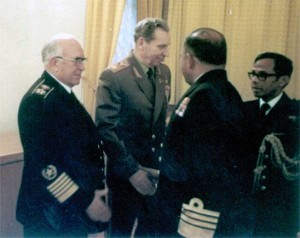
COGS Marshal Ogarkov, Soviet Navy Chief, Admiral of the Fleet Gorashkov and CNS Admiral Dowson with the author
Following the umbrella Agreement – a professional soviet delegation led by Belausev, the Soviet Minister of Shipbuilding, came in December 1983, for extensive survey and assessment of shipbuilding and heavy industry capability in India. All the prospective Public and Private sector industries identified by India were considered.
Advanced Technlogy Vessel Programme Launched
The ATV programme was formally launched in April 1984. The Management structure replicated the Integrated Guided Missile Project. The Apex Board was chaired by the PM/RM and members consisted of SA to RM, CNS, Secretary DAE, Finance and DGATV with PDATV (Technical Coordination) as the Secretary. At the next level was the Programme Management Board – chaired by SA to RM.
The third level was the Technical Management Board chaired by the DGATV and attended by heads of all Work Centres. Finally, there was the Joint Indo-Soviet Working Group (JISWOG) – alternately chaired by DG ATV and the Soviet Deputy Minister of Ship Building, Rezinov. The work centres consisted of DMDE, PTC, SBC, MTC, Bharat Heavy Engineering Ltd, Larsen & Toubro Ltd. and Defence Research and Development Laboratory. By end 1980s, most of these institutions were sanctioned and running.
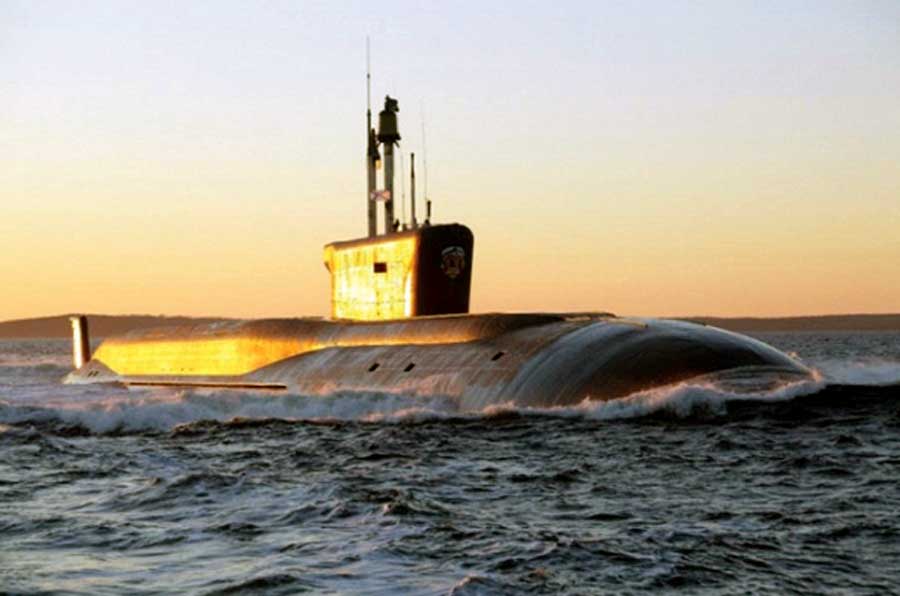
Akula class s/m K-480 AkBar’s hull was used for SSBN; Borey class; Proj:955; LxBxD = 179x13.5x10m; 14,720/24,000t; 2xOK-650B reactor – 2x 190 MWt; 2xAEU steam turbine – 98,000 SHP ; 2 Shaft ;16x Bulava SLBM; 6xSS-N15 cruise missile torpedo tube launched
This is considered an appropriate time to review the major hurdles faced by the programme. As expected, technological challenges were numerous. They have been intentionally, kept out of the discourse here. Only two of the most overbearing, issues of human errors that had significant affect on time overruns, are high-lighted here. But for those, it is believed that the project would have crossed the threshold and avoided getting embroiled in the quagmire that followed the collapse of the Soviet Union. And the boat could then have been delivered at least one decade earlier. It took several interventions at the highest political level to overcome those setbacks. Thereafter, on that count, the project has had a comparatively smooth sailing, all the way.
Having achieved success in the technology demonstration mode, it is time now to focus on improving operational efficiency, stealth capability, habitability, ergonomics, maintainability and survivability…
The first major challenge was to reorient the s/m design team from a conventional single hull design framework to a double hull nuclear powered s/m concept. Besides, having to put aside all the design normative and processes learnt at the Professor Gabler’s s/m Design Institute in Lubeck, it required a complete mindset change. Next, came the enormous challenge of innovating, the unique fuel package required for a compact s/m reactor. The Indian establishment had vast experience in developing the nuclear power programme under very stringent international technology denial regime. At that point of time, we also faced serious obstacles in obtaining enriched uranium, the universally accepted staple feed for the s/m reactors, in the quantum required to sustain a nuclear s/m flotilla.
The thrust of our power programme was based on using plutonium and thorium as fuel in the rod form. That was our forte. Furthermore, based on the surmise that no external assistance could be expected – BARC had initiated the design using the Plutonium rod type fuel route for the s/m reactor. The Indian Navy staunchly opposed this choice – declaring it impracticable for naval application. Nationalist pride and professional confidence of the scientists, to be able to find an alternative route on their own, blocked any venture for any external assistance. The initial conditionality of the safeguard clause also delayed our seeking any external assistance. The serious Soviet reservation due to the fear of clash of interest till FRG was onboard on the Nuclear Proliferation Treaty front – was another cause for time overruns.
After the uranium enrichment facility at Rattehali became operational – we pressed ahead with the enriched uranium fuel rod solution. The plate type fuel element option, with its inherent robustness and sound suppression qualities, would have been the preferred choice. Accepting the severe limitation of indigenous capability to deliver this, within the time constraint of the project, the issue perforce had to be put on the backburner.
Ramboli has been chosen for its strategic location, deep water protected harbour and scope for providing full support to the entire range of nuclear s/m and a carrier battle group…
Geo Strategic/Political Dimensions
In its long and tedious journey, the project has experienced many ups and downs. In a complex and multi-disciplinary project like this, such hiccups are to be expected and need to be taken in one’s stride with an open mind and scientific temperament. This is especially so, since it involved cutting edge technology that would normally be denied on the grounds of:
- Commercial considerations.
- Protecting of own patent rights.
- It being covered under international technology denial regimes.
Besides those, there would have also been countless other technological challenges. It is also evident that in the end, they have all been overcome, quite successfully. Arihant stands testimony to that.
In spite of a hostile environment of stringent technology denial regime being in place – on this count, the national interests of both India and the USSR converged. In-depth analysis would show that most of the hiccups could be attributed to transient changes in the
geo-strategic/political scenario between the USSR and the USA, the USSR and the PRC and NPT, MTDR regimes, in particular.
On the one hand, take the downslide of the relationship between the USSR and the PRC in the late 1960s – peaking in the breakdown over the boundary line along the River Usuri. On the other side, consider the geo-strategic necessity for USSR to try and wean the IN’s dependence on RN. Put together, these are perceived to have led to the Soviet overtures to IN. On the downside, consider the period of Soviet preparations for their withdrawal from Afghanistan and also the collapse of the Soviet Union and the cosiness that crept in towards the West thereafter. All these, can be closely linked with specific events leading to the upswings/downturns experienced by the project.
The above could be typically represented by the following instances:
- In March 1988, the Soviet Politburo gave clearance for ToT to India on nuclear propulsion.
- In 1999, after the collapse of USSR – the RF Central Committee and the Council of Ministers and the Politburo expressed their opposition to any nuclear propulsion assistance to India.
- The status quo ante was only restored after Prime Minister Rajiv Gandhi’s personal intervention at the top political level with President Gorbachov.
The main thrust should be to emulate the ATV model of acquiring design ‘know how’ and ‘know why’ TOT…
By and large, the systemic support for the project remained steady and robust – except in the periods identifiable and associated with understandable tactical swings. Besides the establishment itself – we had a staunch supporter in Admiral of the Fleet Gorashkov. The Rubin Design Bureau (Academician Xlopkin and Chief Designer Karmolitsin) and Krilov Design Institute played a stellar role in steering our design team through the turbulent waters. Captains First Rank DC Kocperyuths the CO of the S/M Training Centre Makharov played a pioneering role in preparing our first nuclear s/m crews.
Lessons Learnt
The ATV programme model has proved its worth and must be emulated. The project is almost entirely managed by naval personnel though under the DRDO umbrella. This has established that in the Indian environment technical naval officers duly empowered and appropriately supported by integral finance and commercial wings, is the best combination, to deliver such highly complex multi-disciplinary projects.
The importance of continuity in the core group is an essential criterion, especially in such highly complex projects with long gestation periods. This comes into direct conflict with HRD requirement of the Navy that need to fulfil some rigid criteria stipulations for each selective promotion opportunities. Domain expertise inputs from the end user, analytical ability and scientific temperament are other indispensable qualities essential for the project. The IN has managed to strike a balance and provided a judicial mix of all the requisite properties. Now that the project cadre has stabilised, horizontal inductions at the top level must at all cost be avoided, especially, to merely provide billets for promotion avenues to the general Naval cadre. This is essential to maintain the highest standards and cadre morale within the programme.
Time overruns is another major issue with all DRDO projects. In this case, besides the unpredictable changes in the geopolitical scenario, the severe and inflexible security embargo imposed on this project, has seriously impacted on this phenomenon. The absence of an independent technical audit authority has been a severe handicap. Had that been in place – there is good reason to believe that at least ten years of time overruns could have been avoided. This has been a long standing bone of contention for the IN. The Naval Professional Directorates are charged with the responsibility of inducting technology into the IN and are designated keepers of professional standard, safety norms and ethics. They have the wherewithal to fulfil the function including the requisite infrastructure and data base.
To get over the serious operational handicaps of Vizag naval base, a new s/m base, Project Varsha, at a greenfield site at Ramboli is under construction.
Over and above that, there has been no security breach in the more than three decade old PPP arrangement involving several agencies, many of which are in the private sector. Why an independent technical audit authority (under the Official Secret Act), possibly with the full involvement of professional Directorates has been denied, is an often asked question? This could be attributed to a built-in systemic dogmatism? It certainly cannot be due to fear of their not being trusted to keep state secrets – when private sector in the industry could be relied upon, for the same.
The Way Forward
Now that we have declared our intention to transit from an SSGN to SSBN and on to SSN also, it would be prudent to follow in the footsteps of the Russian Navy in developing the follow-on SSBN and SSN, using the basic hull design of Arihant class s/m. This process is depicted by the example of Akula II class Project 971 (SSGN) hull design being used for Borey class of Project 955 (SSBN) and Yesin class of Project 885 (SSN), as illustrated here.
Having achieved success in the technology demonstration mode, it is time now to focus on improving operational efficiency, stealth capability, habitability, ergonomics, maintainability and survivability criteria to achieve the full potential of the platform. To get over the serious operational handicaps of Vizag naval base, a new s/m base, Project Varsha, at a greenfield site at Ramboli is under construction. At the Navy Day celebrations last year – the FOC-in-C (ENC), at his press conference, is reported to have given it a PDC of 2018. Ramboli has been chosen for its strategic location, deep water protected harbour and scope for providing full support to the entire range of nuclear s/m and a carrier battle group to be based there.
Finally, the Project 75I, at the RFP stage, also has some specific take aways from this project. The main thrust should be to emulate the ATV model of acquiring design ‘know how’ and ‘know why’ TOT. And in addition, incorporate a contractual commitment on the JV partner to provide full validation cover for the parallel indigenous design exercise that should be intrinsically linked to the parent Agreement. The ATV design process of proceeding from Arihant to S3, S4, S5 and then on to SSN design – illustrates the point. Otherwise, we will once again land up in the same license production trap that both the HDW Shishumar and the DCNS Scorpene project fell into. This will be the last opportunity to achieve the strategic technological objective of achieving self-reliance in s/m design, particularly of a single hull category and must, on no account, be surrendered.
References
1. Yogesh Joshi – From Denial to Deterrence: India’s Quest For A Nuclear S/M. NPIHP working paper#6 – June 2015.
2. Balazs Szalontai – The Elephant In The Room: The Soviet Union And India’s Nuclear Program 1967 – 1989. NPIHP working paper # 1. November 2011.
3. Dr Anil Anand – The Second Strike. The Book Co India. New Delhi.2014.
4. V. Adm. MK Roy – War in the Indian Ocean.
5. Raj Chengappa – Weapons of Peace.
6. Cmde. Ranjit Rai – Indian Navy Plans To Augment Its Under Water ORBAT. Indian Strategic. December 2014. P.24 ~28.
7. IMR Report – INS Arihant Nuclear Submarine Ready For Trials. Indian Military Review. Vol.5.N.12 December 2014. P29~31.
8. Letter of PM Rajiv Gandhi to RF President M Garbachov of 27 October 1989. Retrieved from RF archives by Yogesh Joshi.
9. R. Adm. A P Revi – A Strategic Dilemma: Fast Depleting S/M Force Levels. IDR Vol.29(4). Dec 2014.
10. Revi – India’s Indigenous S/M: The Design Dilemma. IDR Vol.27(3). Sept 2012.
11. Iskader Rehman – Murky Waters: Nuclear Dynamics In The Indian Ocean. Carnegie Endowment for International Peace. 2015.
12. V.Adm.RN Ganesh –Submarine Future. IDR Vol.20(3).
13. Raj Chengappa – War & Peace.
14. The Russian Acquisitions 1965 – 1971. IN website http://indiannavy.nic.in.
15. Sergey Redchenko – Unwanted Visionaries.
16. NPIHP – IDSA International Seminar on 10 October 2012.
17. TR Subramaniun – Critical Fact – Front Line. 06 September 2013. P.32~34.
18. Revi – Arihant The Annihilator. IDR Vol.2(4). December 2009.
19. Ian Hore – Lacey – Nuclear Powered Ships. Information Paper World Nuclear Association.
20. M Ragheb – Nuclear Marine Propulsion. 15 Oct 2015.
21. M V Raman – Indian Uranium Enrichment Programme. INESP Information Bulletin No 24. Dec 2004.
22. Indian Military Review. Vol.5. Dec.2014




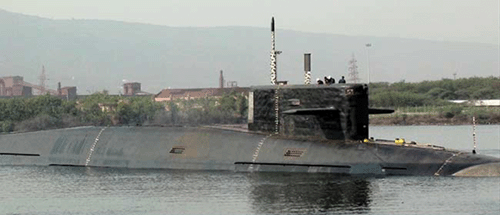

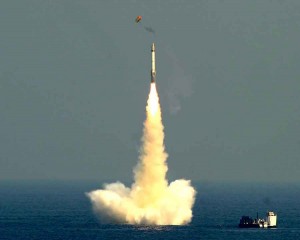
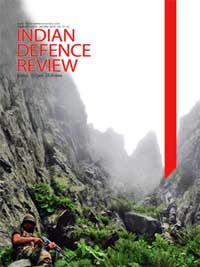
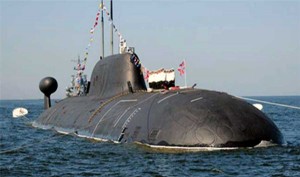

The requirement of 6 SSN’s in 1990’s is clearly mentioned in the book Foxtrot to Arihant – The Story of Indian Navy’s Submarine Arm. The initial BARC-Navy engagement was for teaching navy the basics of atom is also referred in the book. There is a mention Swedish Submarine deal which did not go through. ATV was never conceived as single hull.
First nuclear submarine was taken back by Russians bcos of American pressure n not completion of lease contract.